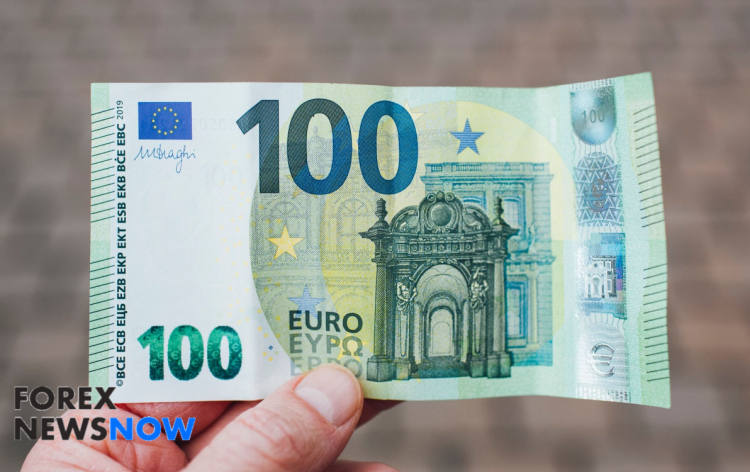Euro’s Resilience and Hang Seng’s Turmoil: Unraveling the EUR/USD Impact

Amidst the intricate tapestry of global financial markets, the Euro stands resilient while the Hang Seng index experiences turbulence following a modest adjustment by the People’s Bank of China (PBOC). The Hang Seng’s downturn sparked by the PBOC’s cautious maneuver prompts speculation on the potential impact on the Euro-to-US Dollar (EUR/USD) currency pair.
As market participants observe these developments, questions arise about the potential implications for the Euro’s trajectory against the US Dollar and how this interplay might reflect broader shifts in sentiment and economic dynamics.
EUR Against Different Currencies Today: What You Should Know!
Commencing the week, the Euro displayed stability amid a temporary pause in its recent downward trajectory, influenced by the resurgent strength of the US Dollar this month. A subdued Monday has been observed across most major currency pairs. Notably, the Federal Reserve’s minutes from its July meeting hinted at a potential year-end target rate increase, elevating the anticipation for the Kansas City Fed’s upcoming Jackson Hole Economic Symposium.
Market focus is directed towards insights into the September Federal Open Market Committee (FOMC) rate decision, with the symposium’s podium offering a platform for impactful adjustments to the Federal Reserve’s broader direction. All eyes are on Fed Chair Jerome Powell’s speech this Friday, as it holds significance for the market sentiment.
Simultaneously, the People’s Bank of China (PBOC) initiated a slight monetary policy easing, resulting in a 10 basis-point shift for the 1-year loan prime rate to 3.45%, while the 5-year rate remained unaltered at 4.20%. This deviation from market expectations of a 15 basis-point cut triggered a sharp decline in Hong Kong’s Hang Seng Index (HSI), contrasting with modest gains in other APAC equity indices.
In commodities, Crude oil displayed resilience, with WTI futures nearing $82 per barrel and Brent hovering above $85 per barrel. Spot gold experienced oscillations around $1,890, remaining below the $1,900 mark.
Looking forward, the US anticipates existing home sales data and a series of Fed speakers’ remarks. EUR/USD’s performance warrants attention, as it hovers below a descending trend line and momentarily halts its bearish descent near a potential support zone within the 1.0830 – 1.0835 range. Possibilities of support are also observed around the 78.6% Fibonacci Retracement level at 1.0770, slightly above the 200-day simple moving averages (SMA). Resistance points include the 21- and 55-day SMAs near the descending trend line, as well as historical breakpoints within the 1.1065 – 1.1095 zone. Further upward, potential resistance lies at various historical levels and Fibonacci Extensions, defining the potential landscape for EUR/USD movements.
How Does This Influence Foreign Currency Traders?
The confluence of factors described in the article presents forex traders with a complex landscape, offering both challenges and opportunities. Traders need to carefully analyze the implications of these developments and craft strategies that align with the evolving market dynamics.
For forex traders engaged in EUR/USD, the Euro’s steadying amid the US Dollar’s resurgence indicates a potential shift in sentiment. Traders employing short-term strategies might consider capitalizing on EUR/USD’s stability, seeking to exploit oscillations within the current price range. Range-bound strategies, such as employing pivot points or Bollinger Bands, could be effective during such periods of consolidation.
The anticipation of a potential rate hike following the Federal Reserve meeting minutes could inject volatility into the market. Traders can strategize by setting stop-loss and take-profit levels, ensuring they account for heightened market movements. Scalping strategies that capitalize on quick price fluctuations might be suitable for the impending shifts in sentiment.
The focus on the Jackson Hole Economic Symposium implies that forex traders should stay attuned to potential shifts in the Federal Reserve’s broader direction. Fed Chair Jerome Powell’s speech holds particular significance. Traders might consider employing a “wait-and-see” approach before major announcements, avoiding large positions until there is greater clarity.
In response to the People’s Bank of China’s (PBOC) rate adjustments, traders should closely monitor the Hang Seng Index’s movement as it can influence sentiment across markets. If equity indices react, it might lead to broader shifts in risk appetite and subsequently impact currency pairs. Traders could consider risk-on or risk-off strategies based on the equity market reactions.
To navigate EUR/USD’s potential support and resistance levels, traders might employ technical analysis tools such as moving averages, trendlines, and Fibonacci retracement levels. A break above the descending trendline could signal a potential bullish reversal, while respecting support levels could provide entry points for long positions.
Ultimately, adapting to these evolving factors requires a mix of technical and fundamental analysis, risk management, and strategic flexibility. Traders must assess their risk tolerance, preferred timeframes, and trading styles to tailor their approaches effectively and capitalize on the opportunities while managing the inherent risks presented by the dynamic forex landscape.


























Comments (0 comment(s))